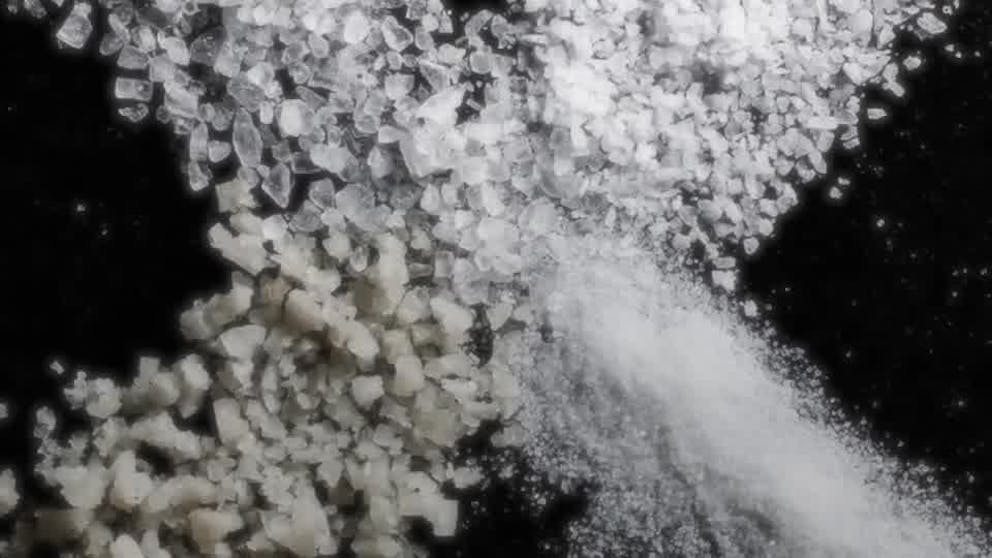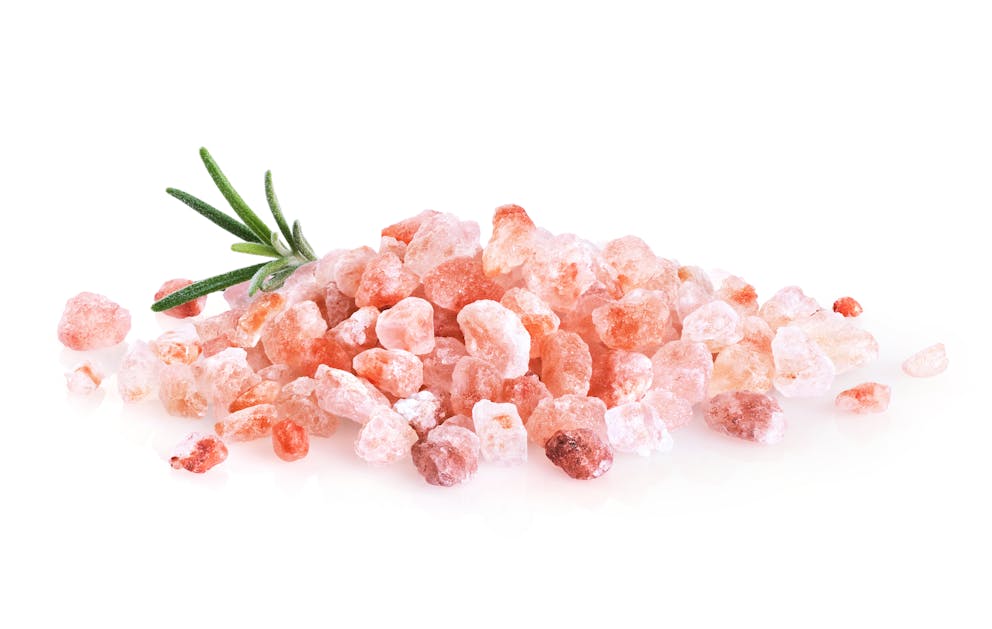Sea Salt vs Table Salt

25 Top Home Remedies That Really Work
Explore powerful home remedies for common health issues
Discover how to use everyday household ingredients to address minor ailments
Get practical tips for the safe and effective use of home remedies

25 Top Home Remedies That Really Work
Explore powerful home remedies for common health issues
Discover how to use everyday household ingredients to address minor ailments
Get practical tips for the safe and effective use of home remedies

25 Top Home Remedies That Really Work
Explore powerful home remedies for common health issues
Discover how to use everyday household ingredients to address minor ailments
Get practical tips for the safe and effective use of home remedies

25 Top Home Remedies That Really Work
Explore powerful home remedies for common health issues
Discover how to use everyday household ingredients to address minor ailments
Get practical tips for the safe and effective use of home remedies

25 Top Home Remedies That Really Work
Explore powerful home remedies for common health issues
Discover how to use everyday household ingredients to address minor ailments
Get practical tips for the safe and effective use of home remedies

25 Top Home Remedies That Really Work
Explore powerful home remedies for common health issues
Discover how to use everyday household ingredients to address minor ailments
Get practical tips for the safe and effective use of home remedies

25 Top Home Remedies That Really Work
Explore powerful home remedies for common health issues
Discover how to use everyday household ingredients to address minor ailments
Get practical tips for the safe and effective use of home remedies

25 Top Home Remedies That Really Work
Explore powerful home remedies for common health issues
Discover how to use everyday household ingredients to address minor ailments
Get practical tips for the safe and effective use of home remedies

How Does Intermittent Fasting Work?
Understand the science behind intermittent fasting and its health benefits
Learn how fasting impacts metabolism, insulin sensitivity, and hormonal balance
Discover the four stages of intermittent fasting
Get practical tips for integrating fasting into your daily routine

How Does Intermittent Fasting Work?
Understand the science behind intermittent fasting and its health benefits
Learn how fasting impacts metabolism, insulin sensitivity, and hormonal balance
Discover the four stages of intermittent fasting
Get practical tips for integrating fasting into your daily routine

How Does Intermittent Fasting Work?
Understand the science behind intermittent fasting and its health benefits
Learn how fasting impacts metabolism, insulin sensitivity, and hormonal balance
Discover the four stages of intermittent fasting
Get practical tips for integrating fasting into your daily routine

How Does Intermittent Fasting Work?
Understand the science behind intermittent fasting and its health benefits
Learn how fasting impacts metabolism, insulin sensitivity, and hormonal balance
Discover the four stages of intermittent fasting
Get practical tips for integrating fasting into your daily routine

How Does Intermittent Fasting Work?
Understand the science behind intermittent fasting and its health benefits
Learn how fasting impacts metabolism, insulin sensitivity, and hormonal balance
Discover the four stages of intermittent fasting
Get practical tips for integrating fasting into your daily routine

How Does Intermittent Fasting Work?
Understand the science behind intermittent fasting and its health benefits
Learn how fasting impacts metabolism, insulin sensitivity, and hormonal balance
Discover the four stages of intermittent fasting
Get practical tips for integrating fasting into your daily routine

How Does Intermittent Fasting Work?
Understand the science behind intermittent fasting and its health benefits
Learn how fasting impacts metabolism, insulin sensitivity, and hormonal balance
Discover the four stages of intermittent fasting
Get practical tips for integrating fasting into your daily routine

How Does Intermittent Fasting Work?
Understand the science behind intermittent fasting and its health benefits
Learn how fasting impacts metabolism, insulin sensitivity, and hormonal balance
Discover the four stages of intermittent fasting
Get practical tips for integrating fasting into your daily routine
The choice between sea salt and table salt is more than just adding flavor to your dishes. It’s about making a healthier decision for your body.
Learn about how these two types of salts, while similar, can impact your overall wellness differently.
The Nutritional Profile of Sea Salt
Sea salt has more to offer than just a taste boost. It's packed with essential minerals contributing to your overall health and wellness.
With 85% sodium chloride, sea salt also boasts a variety of trace minerals, making up the remaining 15%. These are key players in numerous bodily functions.
Essential Role of Trace Minerals Found in Sea Salt
Differentiating from other types, sea salt possesses an array of trace minerals, including magnesium, potassium, calcium, and iron. Each one has its unique role in our body's physiological processes.
Magnesium involves several biochemical reactions within the body, such as protein synthesis and muscle function. Potassium, on the other hand, helps regulate fluid balance and nerve signals.
Beyond these two vital elements, calcium supports bone health, while iron is essential in blood production. So, adding some sea salt to your diet can be beneficial due to its rich mineral content.
How Sea Salt Contributes to Nerve Conduction
Sodium ions present in sea salts play a pivotal role in nerve conduction - transmitting signals across different parts of our bodies. This process ensures effective communication between various regions, ensuring smooth functioning.
This mechanism involves movement across cell membranes, which creates electrical impulses needed for nerve transmission. Therefore, sea salt gives your nervous system the much-needed fuel required for optimal operation.
Muscle Contractions Aided by the Mineral Content in Sea Salt
In addition to neural operations, sodium and other electrolytes like magnesium and potassium aid muscle contractions. These elements work together, facilitating proper contraction and relaxation and preventing cramps or spasms.

Benefits of Using Sea Salt on a Ketogenic Diet
The ketogenic diet, a popular low-carb, high-fat dietary pattern that may provide numerous health and weight loss benefits, is widely recognized. However, it's not without challenges - one being maintaining electrolyte balance during the transition into ketosis.
Maintaining pH Balance with Sea Salt While on a Keto Diet
In your early days following a ketogenic lifestyle, you might encounter what's known as keto flu. This condition includes symptoms like fatigue and headaches due to changes in water and mineral balance when entering ketosis.
But there's good news: sea salt can help manage these issues by maintaining pH levels within our bodies. Sea salts are rich in alkaline minerals that neutralize acids, thus balancing internal pH levels, essential to overall wellness.
Moreover, they assist kidney function, aiding them in filtering out toxins more efficiently and relieving common keto side effects such as bloating or feelings of lethargy.
Role of Sea Salt In Preventing Muscle Cramps During Keto Transition
A standard stumbling block faced by many embarking upon their keto journey? Unpleasant muscle cramps are often caused by dehydration or electrolyte imbalances - both conditions can be mitigated through proper intake of sea salts.
Sodium present within sea salts aids hydration, helping retain water inside cells, while potassium (another trace element found abundantly) supports muscle relaxation, preventing involuntary contractions leading to painful spasms.
A positive correlation exists between sodium intake and improved hydration status, particularly among athletes who lose significant amounts of sweat during strenuous activities.

Additional Benefits from Himalayan Pink Sea Salt
Himalayan pink sea salt offers additional advantages beyond those provided by regular unrefined sea salts, making it an excellent choice for individuals following strict keto diets.
Richer than most other varieties regarding mineral content, including calcium, magnesium, iron, and zinc, Himalayas provide substantial nutritional value alongside a savory flavor profile.
Table Salt - What You Need To Know
The table salt in your kitchen cabinet is not as innocent as it appears. It has undergone a series of processes that strip away its natural goodness, leaving you with little more than sodium chloride and additives.
The process involved in making table salts
Mining underground salt deposits mark the journey's beginning for most table salts. After extraction, these crystals undergo crushing and grinding to achieve a delicate texture before exposure to high temperatures - up to 1,200 degrees Fahrenheit.
This heat treatment significantly alters their mineral structure.
This process effectively robs the raw sea salt crystals of many beneficial trace elements naturally present within them. The end product? Sodium chloride at concentrations exceeding 97%, according to research from Public Health Nutrition.
While our bodies need sodium chloride for fluid balance and nerve conduction, among other functions, we also require an array of minerals absent from refined table salts.
Impact on nutrition due to high-temperature processing
The nutritional fallout from this extensive processing is significant indeed.
By stripping away valuable trace elements during refinement procedures, what remains lacks much-needed diversity compared with unrefined alternatives like popular sea salt varieties such as Himalayan Pink or Celtic Grey Sea Salts.
In addition to losing out on nutrients through heating treatments applied during refining stages, various additives are introduced into finished products post-processing, too, including anti-caking agents, which prevent clumping but may have potential health implications over time, according to findings published by Environmental Science & Technology Letters.
Iodine fortification became common practice after authorities began fortifying salt when iodine deficiencies were linked with thyroid disorders.
However, consuming excess amounts could potentially cause harm depending upon individual circumstances. Hence, moderation becomes critical when using fortified products such as Iodine.
Salt Ratio in Water Consumption
Maintaining the proper salt ratio in water consumption is essential, especially on a keto diet. The body excretes more sodium while in ketosis, and replenishing it is crucial to avoid electrolyte imbalances.
Adding a pinch of salt to water can help restore sodium levels and prevent symptoms like dizziness, fatigue, and muscle cramps. Additionally, for those practicing intermittent fasting, staying hydrated is vital.
So, the question arises, "Can you drink water while fasting?" The answer is yes. Drinking water during fasting periods is highly recommended, as it helps maintain hydration levels and supports the body's natural detoxification processes.
Striking a suitable salt and water consumption balance is critical to supporting overall health and optimizing your keto diet or fasting journey.
Conclusion
The choice between sea salt and table salt extends beyond mere flavor enhancement; it impacts your overall well-being.
Sea salt, rich in essential minerals like magnesium, potassium, calcium, and iron, supports various bodily functions, including nerve conduction and muscle contractions.
In contrast, table salt undergoes extensive processing, stripping away these vital nutrients and leaving behind mainly sodium chloride. When following a ketogenic diet or practicing intermittent fasting, maintaining electrolyte balance with sea salt is crucial for preventing symptoms like fatigue, muscle cramps, and dehydration.
Prioritizing sea salt over table salt can contribute to better health and wellness outcomes in the long run.
Previous blog
Food with the Highest Vitamin C on the Planet
Popular
08/21/2024
40.2K views
05/22/2024
36.8K views
08/19/2024
214.3K views
03/18/2024
11/21/2022




